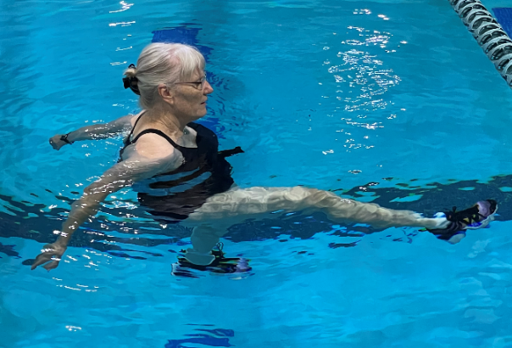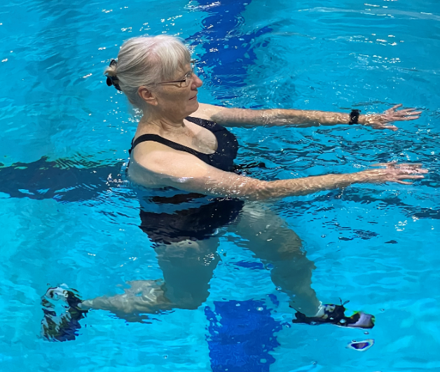Ai Chi (“energy of love”) is a water exercise and relaxation program that combines deep breathing and slow, large movements, performed in continuous, flowing patterns. It was created by Mr. Jun Konno of Japan and further developed my Ms. Ruth Sova in the United States. The YouTube video above shows Mr. Konno demonstrating Ai Chi.
Ai Chi, performed in shallow water, is so wonderfully relaxing that I wanted to try it with my deep water classes. This required modification, since weight shifting is not possible while suspended in deep water. I will present my modifications on Ai Chi Day, on Sunday July 25, 2021. The Zoom conference lasts from 8:00 AM – 12:00 noon EDT (7:00 AM – 11:00 AM CDT). There will be 18 presenters, including Jun Konno and Ruth Sova; my presentation is 10:10 – 10:19 AM EDT (9:10 – 9:19 AM CDT). If you are interested in attending, you can contact Ruth Sova at ruthsova@ruthsova.com for more information.
I am excited about presenting. Here is a preview of Ai Chi in deep water:



The first stage of Ai Chi is called Contemplating and it is a preparation for the moves to come. your body is in an upright posture with the spine in neutral and the legs apart. The arms are out to the sides near the surface of the water. Focus on your breathing. Inhale through the nose and exhale through the nose and mouth. Become aware of how your body rises and falls in the water. Then begin the first sequence, a series of four moves called Floating, Uplifting, Enclosing and Folding, which focus on breathing. They feature a series of arm moves. Most of the upper body moves work well in deep water, but upward movement, such as the front shoulder raise in Floating, tends to make the body sink. You can avoid sinking by turning the thumbs up and slicing through the water.


The second Ai Chi sequence focuses on healing, and includes exercises for the upper body and trunk stability. You will need to brace your core to stabilize in deep water. Webbed gloves can also help with stability if necessary. The movements in this sequence are called Soothing, Gathering and Accepting. The moves begin with a turn to the side. In deep water you will use a scull to assist in turning. The legs stay apart in a suspended lunge position while the arms sweep and flow. After you perform several repetitions of a move on one side, you turn to the other side and repeat the repetitions.



The third Ai Chi sequence is called healing and it focuses on the lower body. The moves are called Accepting with Grace, Rounding and Balancing. To get into position you turn to the side using a scull which puts the legs in a suspended lunge position. From there you need to drop the legs into neutral or the lower body movement tends to become a slow cross-country ski. Instead, brace the core and move one leg to the back, or to the front, or swing it front to back as in Balancing (in the photos above) while the arms sweep and flow. After performing several repetitions of each move on one side, turn to the other side and repeat the repetitions.
There is no right or wrong way to perform Ai Chi. Whatever adaptions you make, including deep water adaptations, will make it right for you. See you in the pool!

